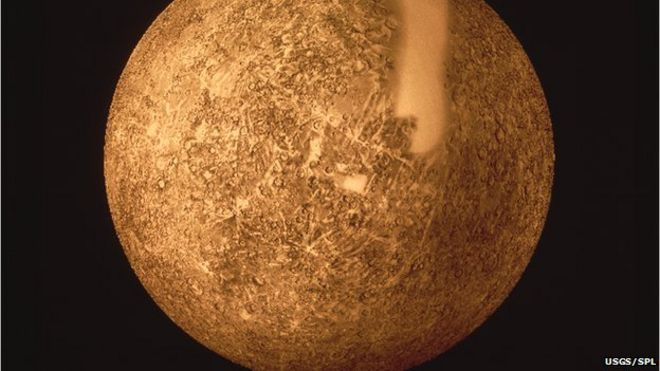
Mercury’s dark surface was produced by a steady dusting of carbon from passing comets, a new study says.
Mercury reflects very little light but its surface is low in iron, which rules out the presence of iron nanoparticles, the most likely “darkening agent”.
First, researchers modelled how much carbon-rich material could have been dropped on Mercury by passing comets.
Then they fired projectiles at a sugar-coated basalt rock to confirm the darkening effect of carbon.
Their results, published in the journal Nature Geoscience, support the idea that Mercury was “painted black” by cometary dust over billions of years.
The effect of being intermittently blasted with tiny, carbon-rich “micrometeorites”, the team says, is more than enough to account for the mysterious, dull surface seen on Mercury.

